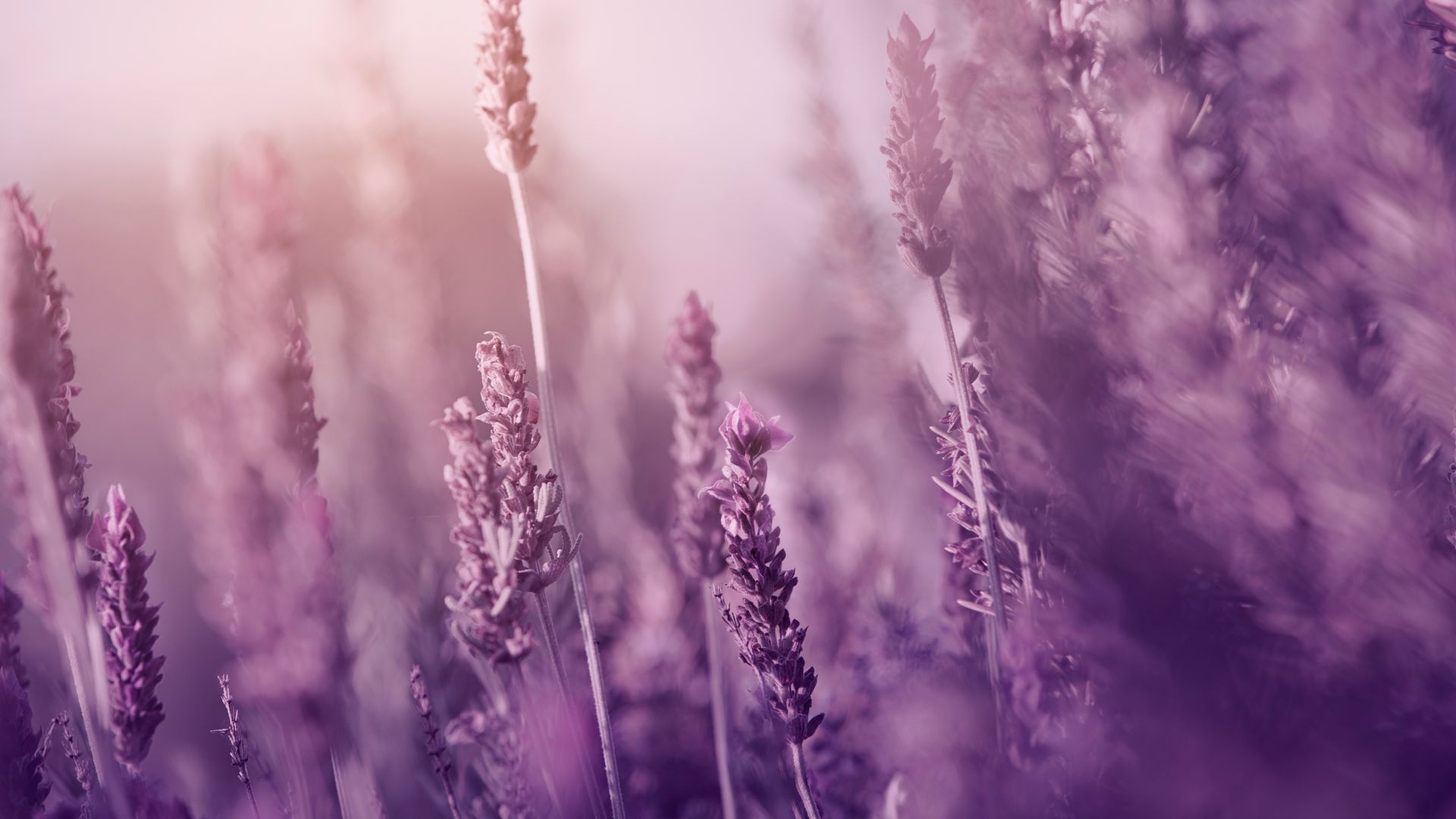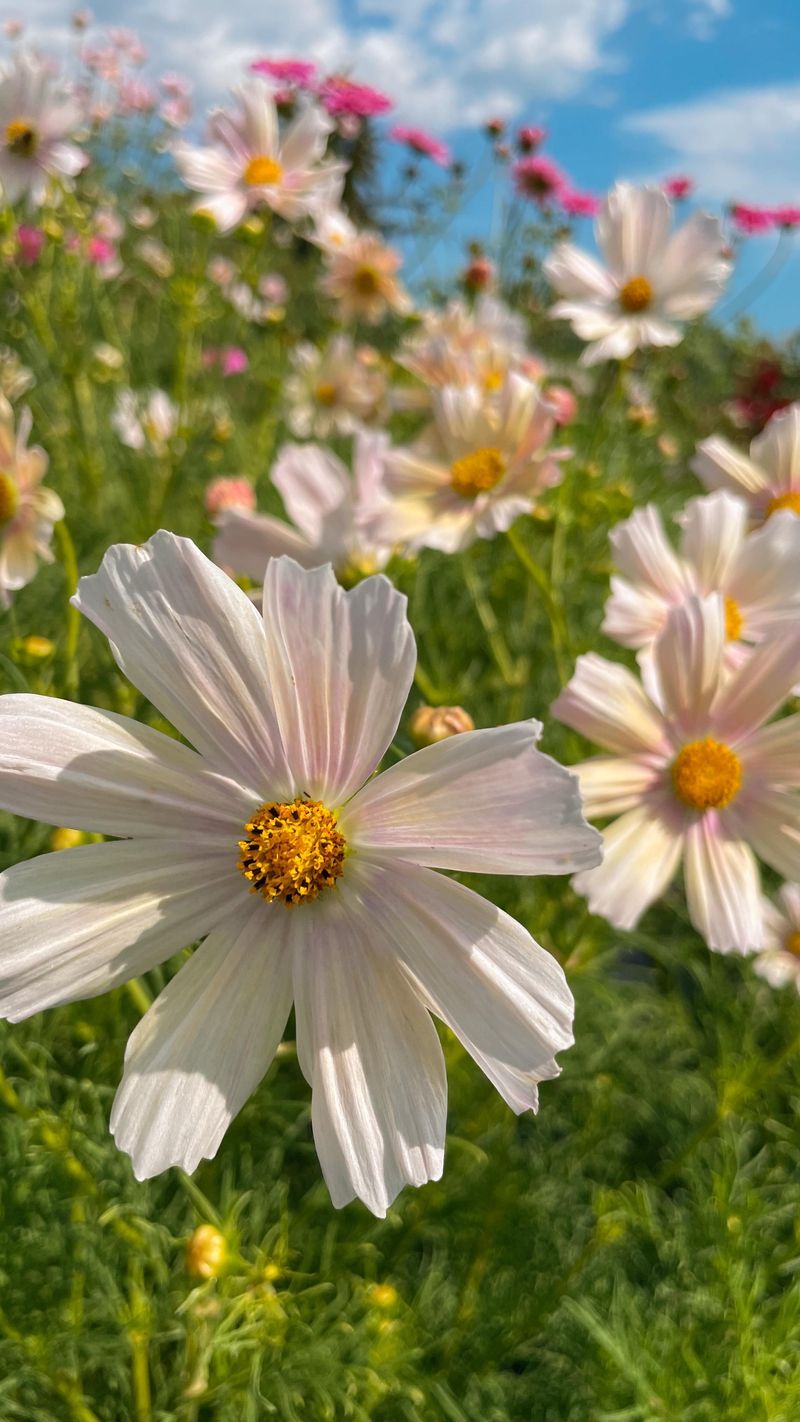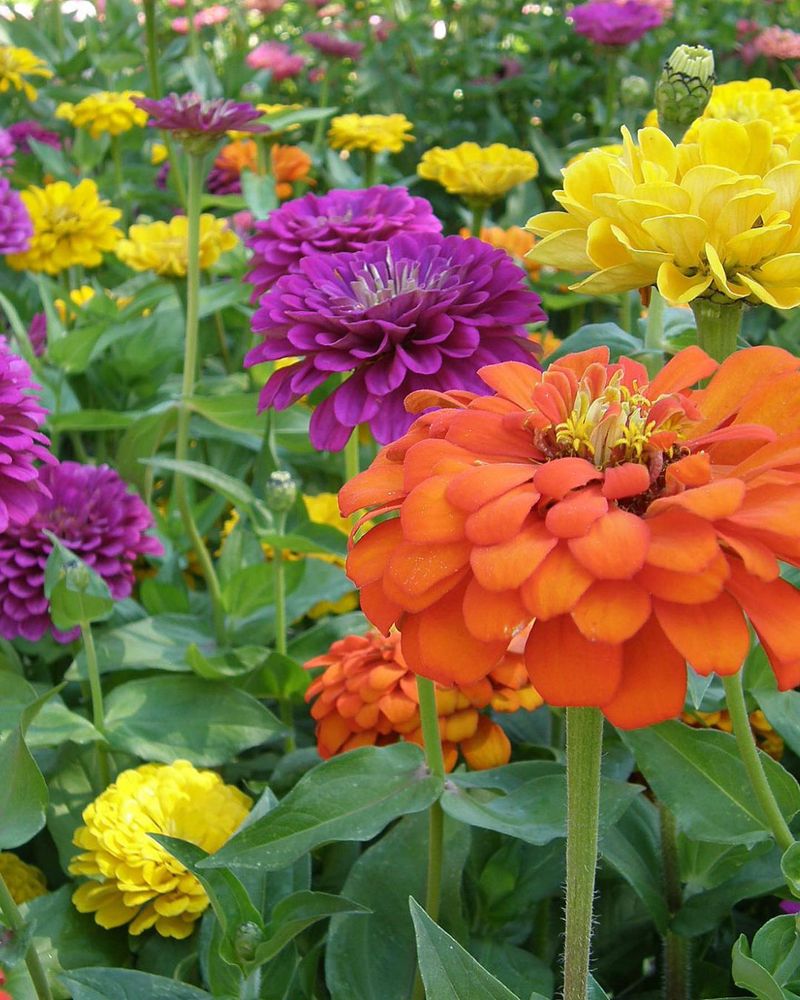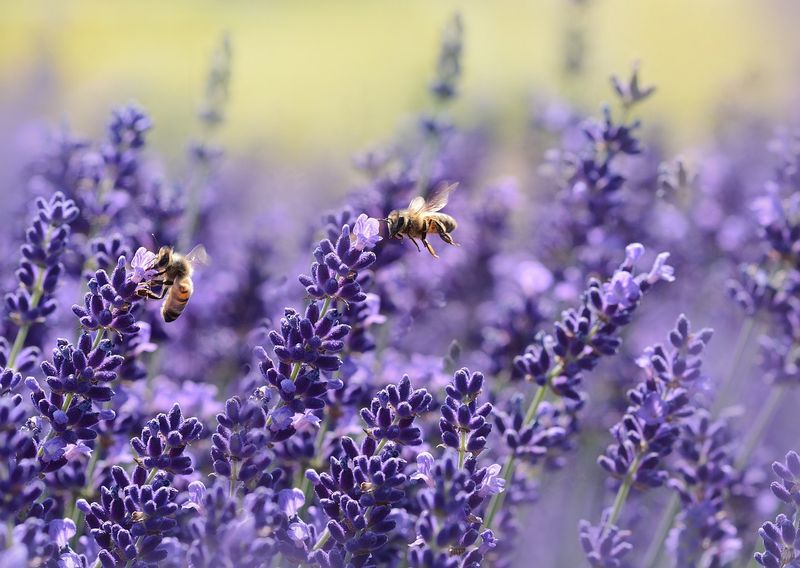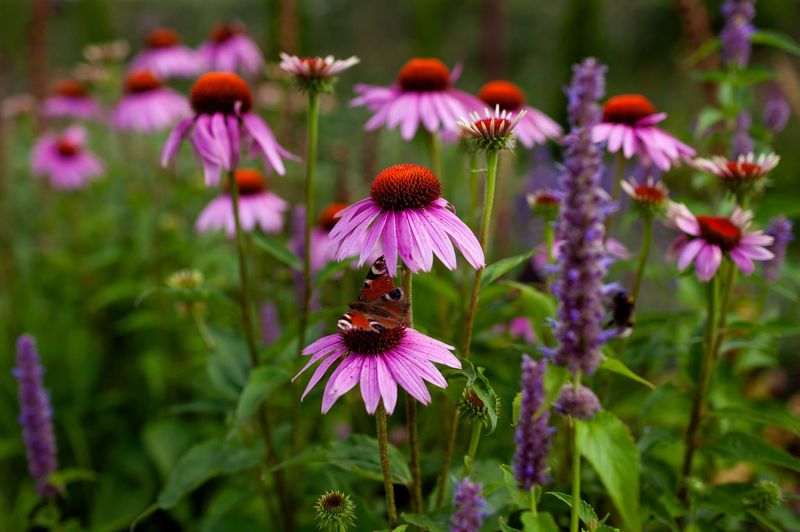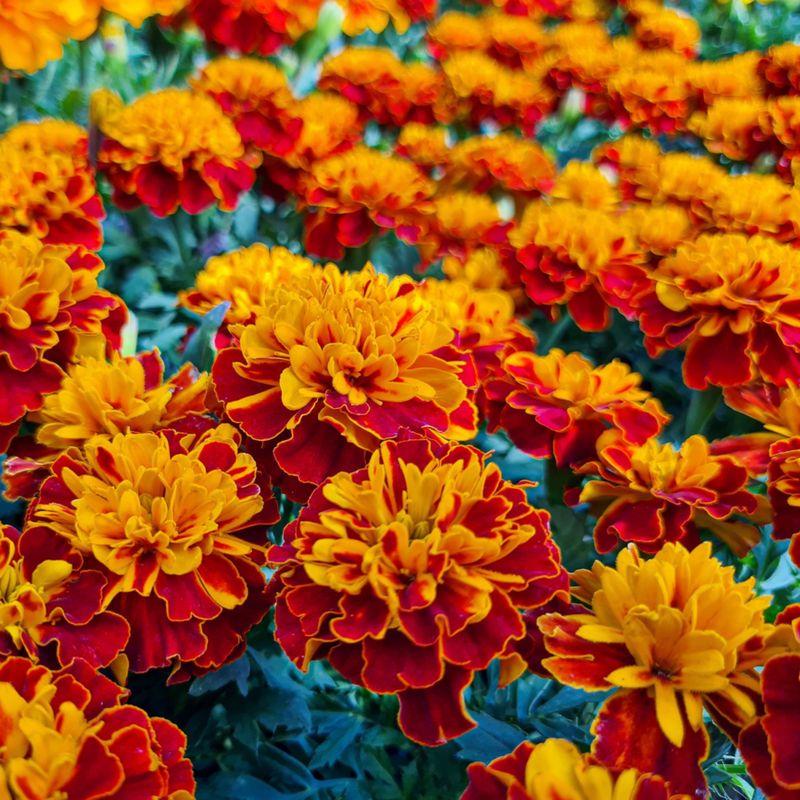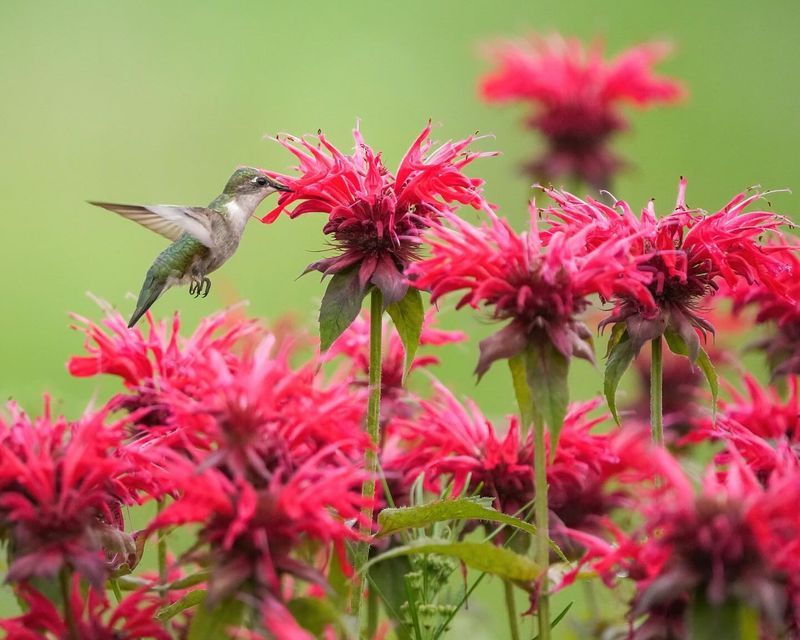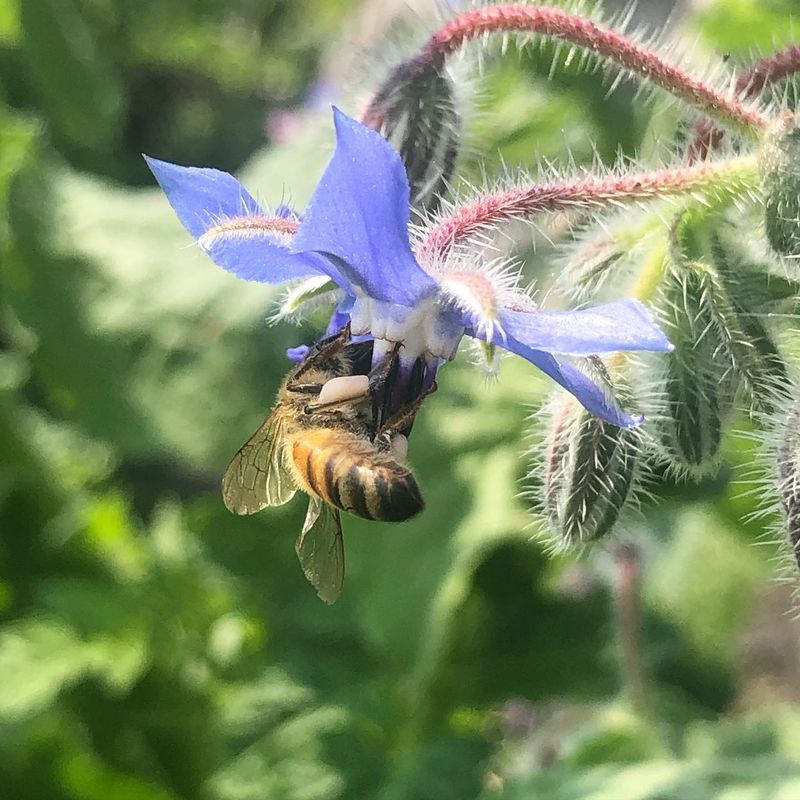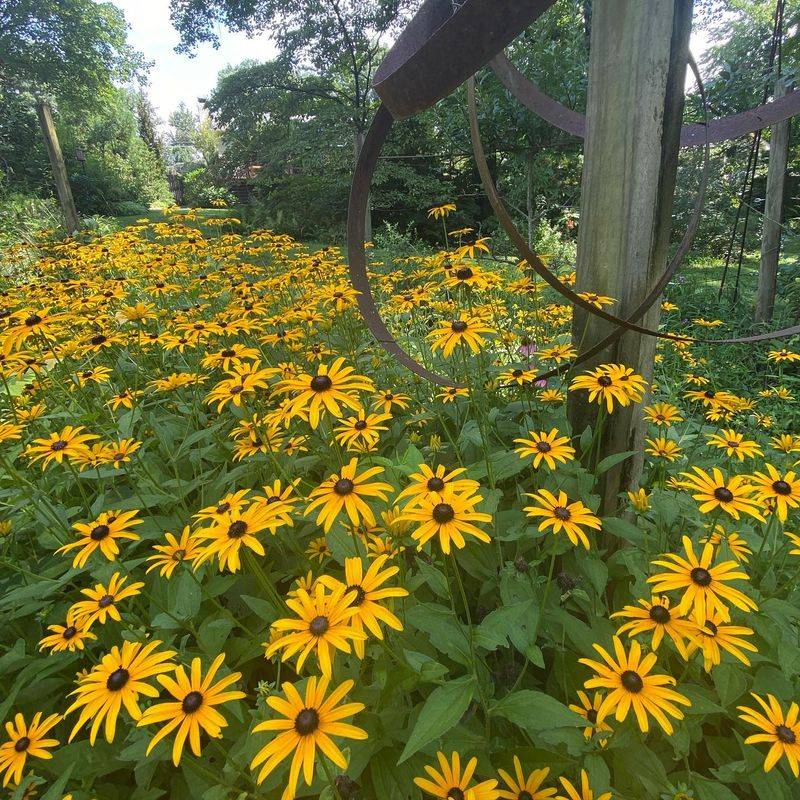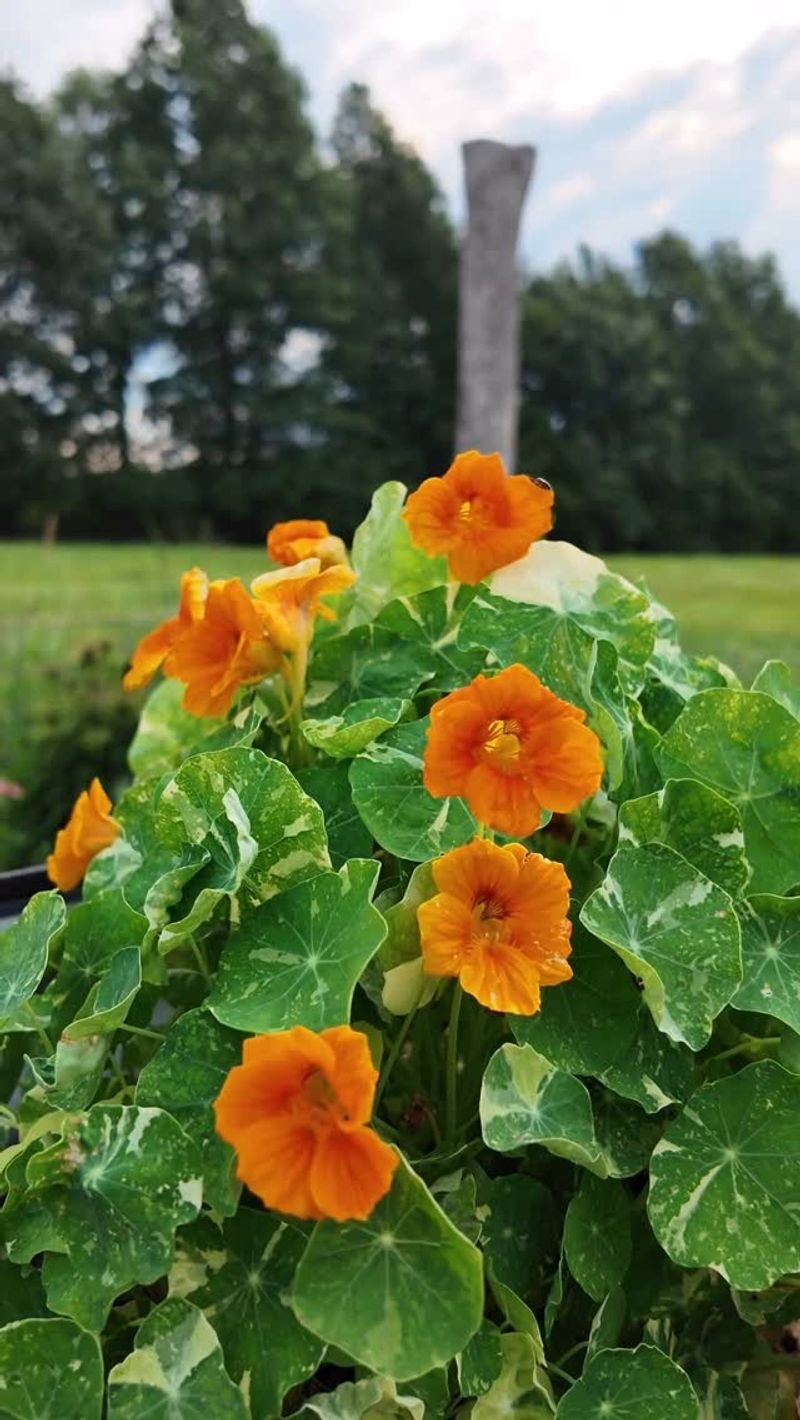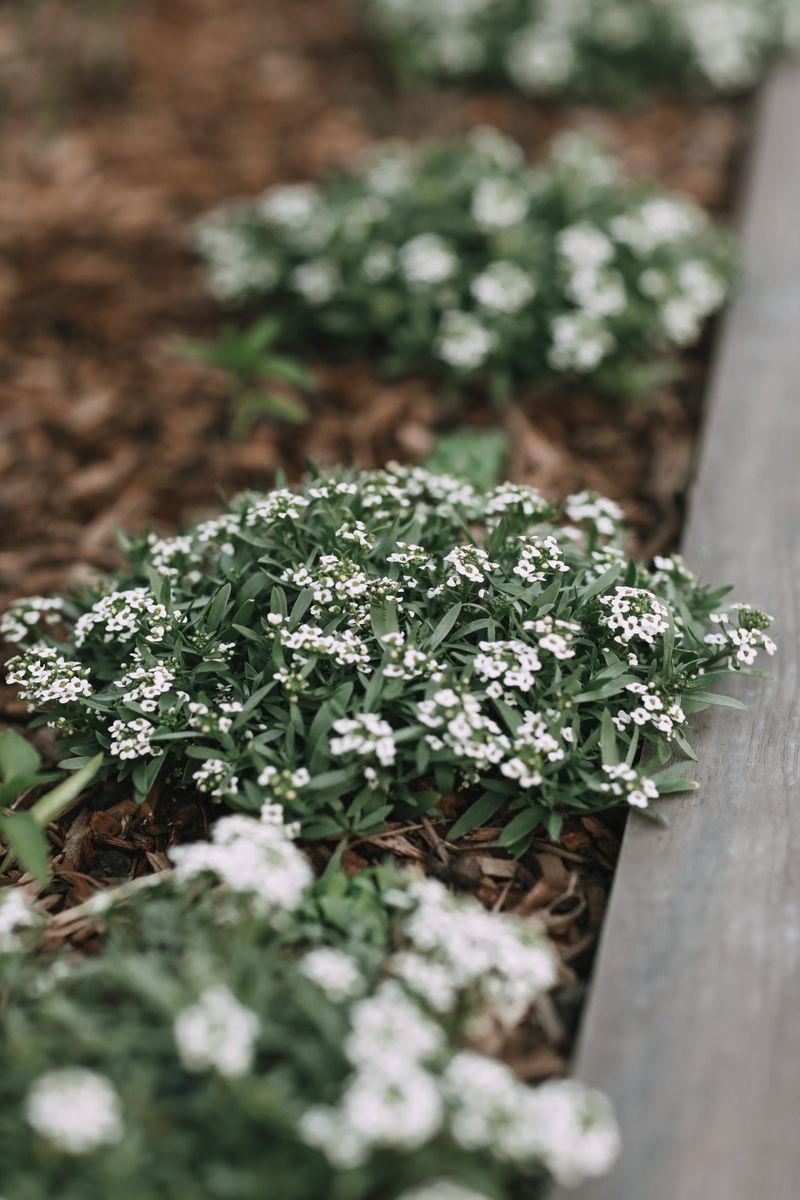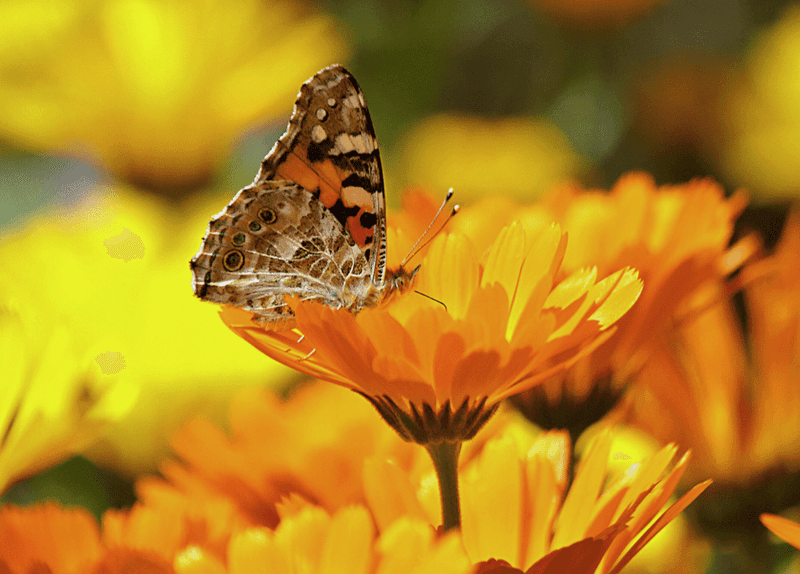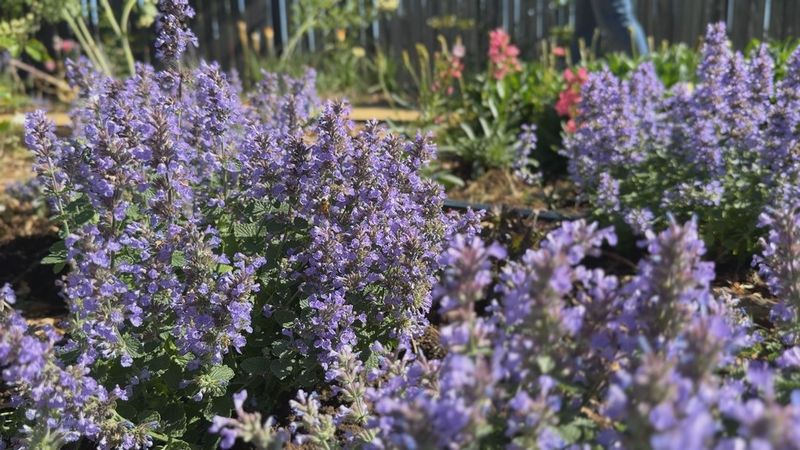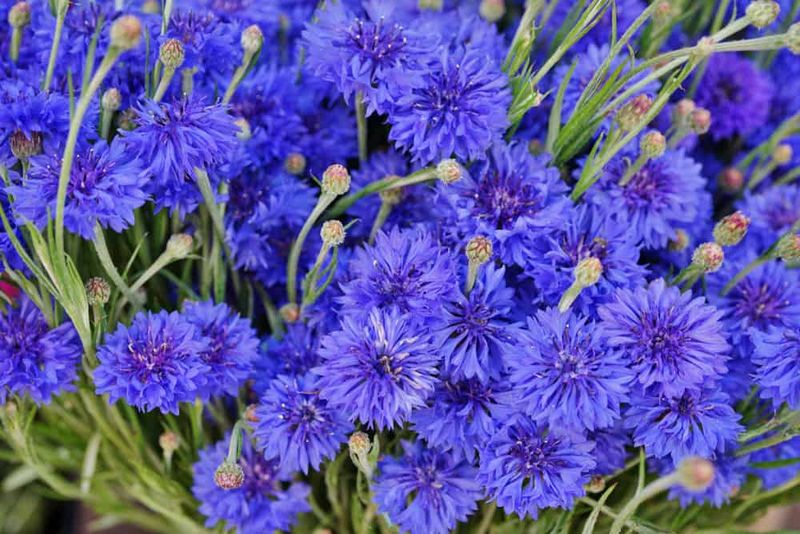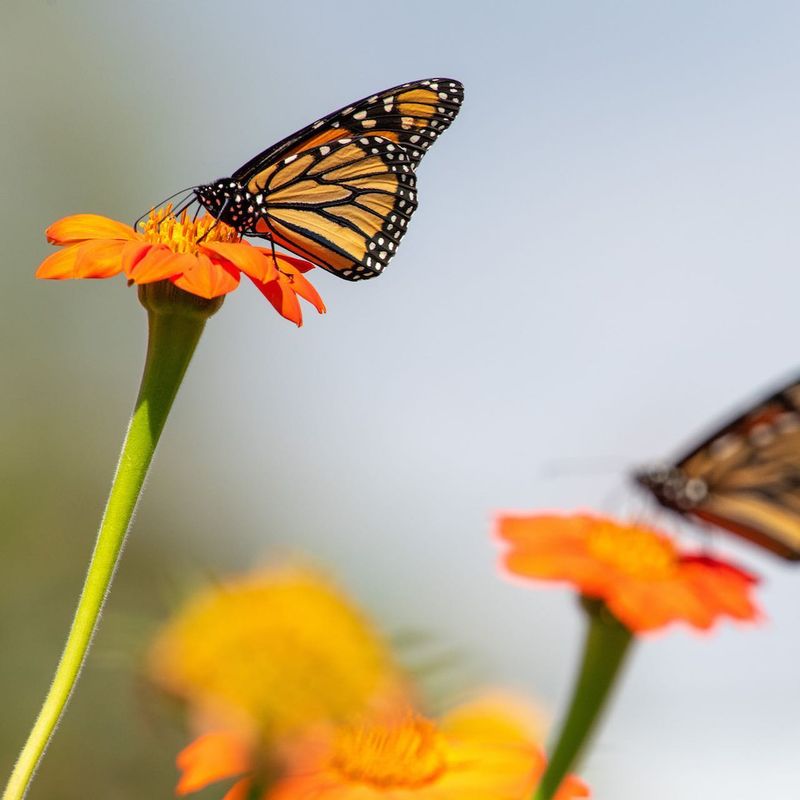Want a garden that’s full of color, life, and buzzing bees—without spending a ton? I’ve found that planting for pollinators is one of the most rewarding (and affordable) ways to bring your yard to life. A few well-chosen blooms can make all the difference.
Some of my favorite garden moments are watching butterflies flutter in or hearing the soft hum of bees doing their thing. It’s such a simple joy—and these plants do the work without needing much in return. Even better, most are easy to grow from seed or starter packs.
If you’re dreaming of a garden that’s both beautiful and budget-friendly, these pollinator-attracting flowers are a perfect place to start. You’ll get non-stop blooms, happy wildlife, and maybe even a few compliments from the neighbors.
1. Sunflowers: The Happy Giants
For just a few dollars per seed packet, sunflowers deliver massive returns in both size and pollinator appeal. Bees absolutely can’t resist their wide, pollen-rich centers, especially the open-faced varieties that make pollen collection easier.
Growing them couldn’t be simpler – just poke seeds into warm soil and watch them reach for the sky. My daughter’s sunflower grew taller than our garage last summer, becoming the neighborhood measuring stick for kids.
The compliments roll in once these sunny faces bloom, with neighbors often slowing their walks to admire them. Some varieties even produce edible seeds, giving you flowers, wildlife food, and snacks from one inexpensive plant.
2. Cosmos: Feathery Showstoppers
Cosmos seeds cost next to nothing but produce dozens of delicate blooms that dance in the slightest breeze. Their ferny foliage adds texture even before the pink, white, or magenta flowers appear, creating a meadow-like feel anywhere.
Last summer, I scattered cosmos seeds along my driveway in poor soil and completely forgot about them. Weeks later, butterflies guided me to discover the gorgeous display that had appeared with zero effort on my part.
Many gardeners don’t realize these beauties actually bloom better in mediocre soil than rich ground. Skip the fertilizer, water occasionally during dry spells, and you’ll have floating flowers that keep producing until frost kills them.
3. Zinnias: The Color Explosion
A single $3 seed packet yields enough zinnias to fill several garden beds with candy-colored blooms that pollinators adore. Unlike fussier flowers, these tough plants shrug off heat waves and keep flowering when other plants have given up.
My elderly neighbor taught me to plant zinnias in rainbow order – a trick that creates stunning visual impact while attracting different butterfly species to each color. The butterflies seem particularly drawn to the bright orange and hot pink varieties.
Cutting zinnias for bouquets actually encourages more blooms, creating a win-win situation where your indoor vases and outdoor garden stay consistently full. Their sturdy stems hold up well in arrangements, earning praise from visitors who can’t believe they came from such inexpensive seeds.
4. Lavender: Fragrant Purple Clouds
Starting lavender from seed takes patience but rewards you with dozens of fragrant plants for the price of one nursery specimen. Honeybees travel surprising distances just to visit these aromatic purple spikes, often ignoring other flowers in favor of lavender’s rich nectar.
A $4 investment in my lavender border has paid off for seven straight years without replanting. The woody stems survive winter in most regions, returning bigger each spring and requiring almost no maintenance beyond occasional trimming.
Guests constantly run their hands through my lavender plants, releasing the calming scent and asking for cuttings. The dried flowers retain their fragrance for months, allowing you to bring the garden’s magic indoors long after summer ends.
5. Coneflowers: Native Powerhouses
Goldfinches perform amazing balancing acts on coneflower seedheads, creating natural entertainment visible from kitchen windows. Though slightly pricier as plants, a few purchased specimens will self-seed generously, eventually creating drifts of purple, white or yellow blooms that return yearly.
During last year’s drought, my coneflowers kept blooming while other perennials struggled. Their deep taproots accessed moisture other plants couldn’t reach, demonstrating why native plants often outperform exotic species in challenging conditions.
The distinctive raised centers of coneflowers provide perfect landing pads for butterflies and bees, who seem to appreciate the stable surface. Medical researchers study these plants for immune-boosting properties, but gardeners simply appreciate their reliable beauty and wildlife appeal.
6. Marigolds: Pest-Repelling Wonders
Garden centers often sell marigold six-packs for less than a fancy coffee, making them among the most affordable pollinator plants available. Their distinctive scent repels certain garden pests while simultaneously attracting beneficial insects that hunt problematic bugs.
A ring of marigolds around my vegetable garden significantly reduced tomato hornworm damage last season. The bright orange and yellow blooms created a protective barrier that looked beautiful while serving a practical purpose in our organic garden.
Save dried marigold heads in paper bags at season’s end, and you’ll have hundreds of free seeds for next year’s garden. The flowers hold their color remarkably well even during rainy periods, maintaining their cheerful appearance when other blooms look bedraggled.
7. Bee Balm: Hummingbird Magnets
Resembling exploding fireworks when in bloom, bee balm creates garden drama while being surprisingly affordable as bare-root divisions. Hummingbirds fight over these flowers in my garden, sometimes hovering impatiently waiting for their turn at the nectar-rich blooms.
Garden clubs often give away bee balm divisions at spring plant swaps since it spreads so vigorously. One $5 plant typically expands into a substantial patch within two seasons, providing flowers for both pollinators and cut arrangements.
The spicy scent released when you brush against bee balm foliage adds another sensory dimension to garden paths. Native American tribes used these plants medicinally, brewing the leaves into aromatic teas—a tradition some modern gardeners continue alongside enjoying the spectacular flowers.
8. Borage: The Blue Surprise
Few flowers attract bees as effectively as borage, whose downward-facing blue stars seem almost magnetic to pollinators. The fuzzy stems and leaves give this plant an unusual texture that contrasts beautifully with smoother garden plants.
After planting borage along my path three years ago, it now reseeds itself in perfect spots throughout the garden. The edible flowers taste surprisingly like cucumbers and make stunning additions to summer drinks and salads, impressing dinner guests with their unique flavor.
Borage grows quickly from inexpensive seed packets, often flowering within weeks of sprouting. Its tap root helps break up compacted soil, making it both beautiful and functional in newer garden beds where soil structure needs improvement.
9. Black-Eyed Susans: Drought-Defying Daisies
During scorching August when other flowers wither, Black-Eyed Susans burst into golden bloom, seemingly energized by the heat. Their ability to thrive in poor soil makes them perfect for challenging spots where other plants struggle to survive.
My grandfather started my garden’s Black-Eyed Susan patch with three small plants that have multiplied into hundreds over the years. The cheerful yellow flowers with distinctive dark centers create a meadow-like feeling that neighbors frequently photograph during evening walks.
Butterflies particularly favor these native flowers, often covering the blooms so completely that the yellow petals seem to move. The seed heads provide important winter food for birds, extending the plants’ usefulness long after flowering has finished.
10. Nasturtiums: Edible Conversation Starters
Jewel-toned nasturtium flowers cascade from hanging baskets or spread across garden beds, all from seeds that cost pennies each. The round leaves collect morning dew in perfect droplets, creating miniature reflecting pools that catch early sunlight.
Both flowers and leaves taste peppery-sweet, making them perfect additions to summer salads. My nephew’s skeptical expression when I first served him nasturtium flowers quickly changed to delight when he discovered their pleasant flavor.
Bumblebees seem especially attracted to the orange and red varieties, often disappearing completely inside the funnel-shaped blooms. Nasturtiums actually produce more flowers in less fertile soil, making them perfect budget plants that perform better when you neglect them.
11. Sweet Alyssum: Fragrant Ground Cover
Tiny honey-scented flowers cover sweet alyssum plants so completely that the foliage practically disappears beneath the blooms. The delicate fragrance intensifies in evening hours, creating an aromatic experience that enhances outdoor dinners.
A single $2 seed packet scattered along my garden path has transformed the edges into frothy white borders that tiny beneficial insects adore. These miniature flowers attract specialized pollinators that many gardeners never notice but play crucial roles in garden ecosystems.
Sweet alyssum tolerates light foot traffic, releasing its scent when gently crushed underfoot. The plants often bloom from spring through fall in cooler climates, providing exceptional value compared to more expensive annuals that flower for shorter periods.
12. Calendula: The Medicinal Beauty
Calendula’s sunny orange and yellow flowers appear just weeks after planting inexpensive seeds, brightening gardens from early spring until winter frost. Medieval healers called it “poor man’s saffron” for its ability to color foods golden while providing medicinal benefits.
After discovering calendula’s skin-soothing properties, I started making simple salves from the petals. Garden visitors are always surprised to learn these beautiful flowers have practical uses beyond attracting pollinators.
Unlike fussier flowers, calendula blooms through light frosts, extending the garden’s beauty when summer flowers have faded. The edible petals add bright confetti-like color to salads and rice dishes, making ordinary meals feel special without expensive ingredients.
13. Catmint: The Indestructible Performer
Clouds of lavender-blue catmint flowers emerge from silvery foliage, creating a cool-toned display that complements virtually every other garden color. Honeybees become so focused on these nectar-rich blooms that they’ll bump right into you without flying away.
My original $6 catmint plant has been divided into dozens of new plants over the years. Even gardening beginners succeed with this forgiving perennial that bounces back from neglect, drought, and even accidental mowing with remarkable resilience.
A quick trim after the first flush of flowers triggers a second and sometimes third round of blooms, extending the display through summer. Cats may occasionally roll in the aromatic foliage (hence the name), creating impromptu garden entertainment that amuses visitors.
14. Bachelor’s Buttons: The Vintage Charmer
Looking like tiny blue carnations, bachelor’s buttons bring old-fashioned charm to gardens for the price of an inexpensive seed packet. Their unusual blue color—rare in the flower world—seems to attract butterflies that typically prefer purple or pink blooms.
Mixing bachelor’s buttons with contrasting yellow flowers creates a striking display that stops traffic in front of my corner lot. The unique papery texture of the blooms holds up remarkably well in summer heat when other flowers quickly wilt.
Colonial gardeners considered these flowers essential for cutting gardens, and they still make excellent additions to bouquets today. The dried blooms retain their color remarkably well, providing free material for wreaths and arrangements long after garden season ends.
15. Mexican Sunflower: The Butterfly Beacon
Monarchs will bypass almost any other garden flower when Mexican sunflowers are blooming nearby. The fiery orange-red blooms seem almost electrically charged, standing out even in gardens filled with other colorful plants.
After discovering how much wildlife these flowers attract, I’ve dedicated an entire sunny corner to them. From a $3 seed packet, I grew dozens of plants that reached impressive 5-foot heights, creating a stunning backdrop for shorter garden plants.
Unlike common sunflowers, Mexican sunflowers produce dozens of blooms per plant over a longer season. Their velvety leaves add interesting texture to the garden, while the striking flowers continue attracting compliments and pollinators until the first hard frost.

